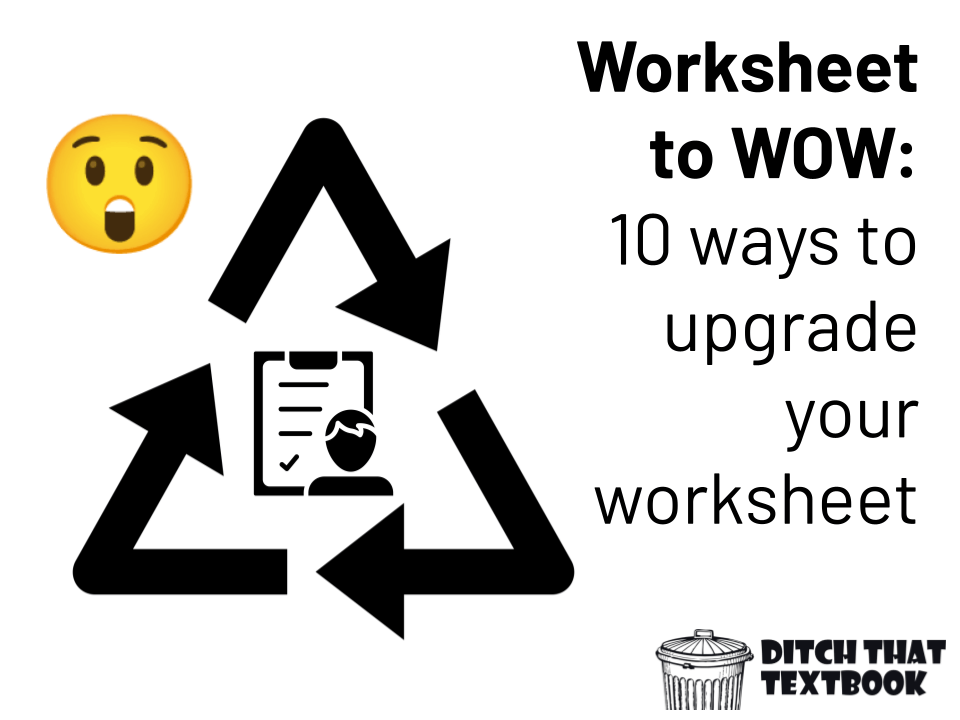
Worksheets have been embedded in classrooms for years. For decades. FOREVER.
The reasons we use them are pretty clear ...
1. We want students to get repetitions with new content. Repetitions make permanent, right? And we hope that the more stuff that students do with new content, the more likely it'll stick in our brains.
2. They're ready to use. Most of our textbooks come with pre-made worksheets. Photocopy them. Hand them out to students. The work is done ... and we didn't have to think too much in the process.
3. They're easy to grade. Students turn them in. We usually grade them en masse. Stick em in the grade book and return them to students.
But w want to do better than the old standard photocopy worksheet, right?
(I mean ... you're here on a post about upgrading worksheets for a reason, aren't you?)
1. They're boring. Let's be honest ... and recall that meme I've seen all over social media: "Thanks for that great worksheet" said no student ever. Kids usually hate them.
2. How much learning actually comes from them? Sometimes, they're mindless busywork ... and when they're mindless, the mind isn't really turned on. Hence, very little learning.
3. There's little or no creativity or personality. This makes it really hard to get motivated to complete worksheets. Usually, grades are the motivation to complete worksheets ... students want to get good grades.
So ... can we do better?
Can we turn a worksheet into a "WOW" experience?
We're about to find out! Here are 10 ways your classroom technology can help transform your worksheet to "WOW" ...
💡Share your ideas: How would you transform a worksheet to WOW? Share your ideas in a comment below!
BONUS: A filing cabinet full of ideas ...
These filing cabinets are packed with options for upgrading your worksheets! Check out:
- Tools for overhauling your worksheet activities
- Templates to assign students
- Recall activities to make learning permanent
- Visual activities to engage
- No-tech activities that are tactile
Click the filing cabinet drawers below to open a cabinet. Then, click a folder to pull it out -- and open it!
Want to access the files and links mentioned in the file folders? Get it all in the speaker notes of the Google Slides file here. (Hat tip to SlidesMania.com for the template!)

1. Vocabulary matching
Why we use these worksheets: Students learn new vocabulary words all the time in almost every class. When they know these vocabulary words and are able to apply them in their work, they can do higher-order thinking and learning with new material. Matching worksheets are popular because the definition is right there ... but it's more challenging because there are more than four possible answers.
An alternative: A Wordwall vocabulary "match up" activity (example)
Why this works: Wordwall can check the accuracy of students' work immediately (timely feedback). You can use images as the keyword and/or the definition, which creates verbal/visual connections in the brain. You can generate audio for the keyword, letting students hear correct pronunciation in multiple languages (which also is more accessible).

2. Short answer recall
Why we use these worksheets: The answer isn't staring the student in the face. They have to either remember it -- or look it up. This is a slightly more rigorous recall activity to see if students remember specific facts or items.
An alternative: A brain dump activity on Socrative
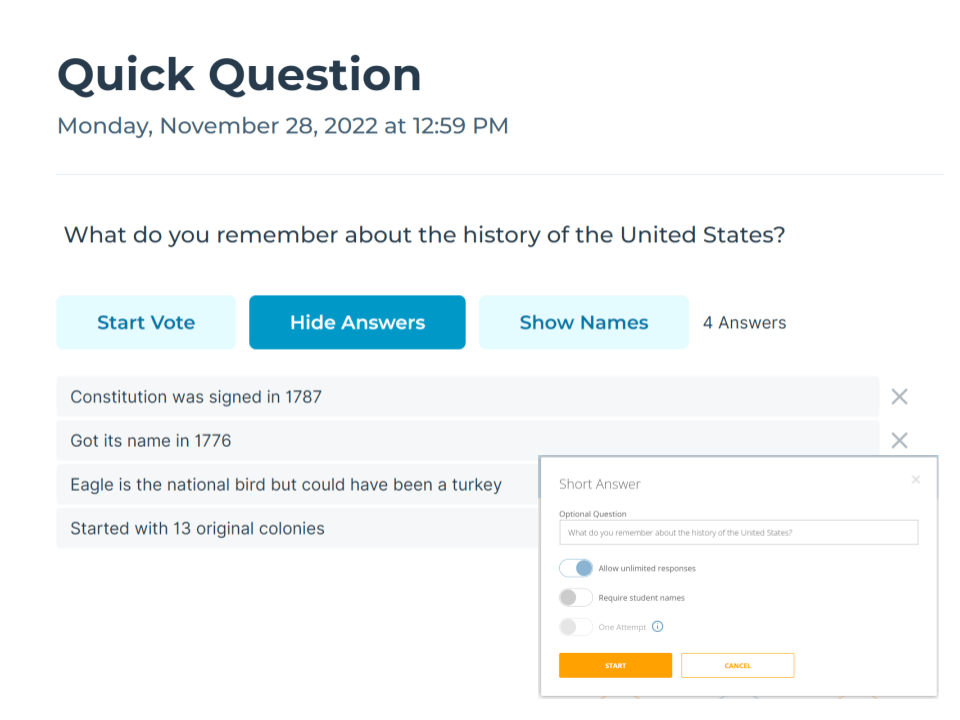
Why this works: Brain dumps are a recall activity based on the concept of "retrieval practice," something cognitive science shows improves long-term memory. Students recall information directly from memory instead of looking it up. Brain dumps in Socrative are quick and easy with the short answer option. They can be broad ("What do you remember about this topic in general?") or specific ("What do you remember about what this person did during this event?"). It also eliminates playing "gotcha" with students (asking them a very specific question they don't remember even though they do remember a lot of other pertinent things).

3. Mapping
Why we use these worksheets: We want students to be able to pick out certain items on maps -- capital cities, rivers, countries, regions, etc. Giving them blank maps -- or maps with blanks to fill in or parts to mark up -- lets them do this recall activity directly on the map.
An alternative: An interactive Google Slides map template (get template here)
(Note: The image below is the instructions page. Use the following slides in the template to actually do the activity.)
Why this works: The map in this template can be swapped out with any map you want to use. It uses draggable icons and the scribble tool and polyline tool to draw lines and shapes. You don't need colored pencils, markers, or crayons ... and mistakes can be erased with the delete key or undo. It also lets students bring in images, which isn't as easy to do in a worksheet.

4. Multiple choice recall
Why we use these worksheets: These worksheets have been staples of classrooms forever. They're fast and easy to grade. They give students repetitions with new material (although we could argue that they're mindless reps that don't lead to lasting learning).
An alternative: Create a physical game (or rework an old one)
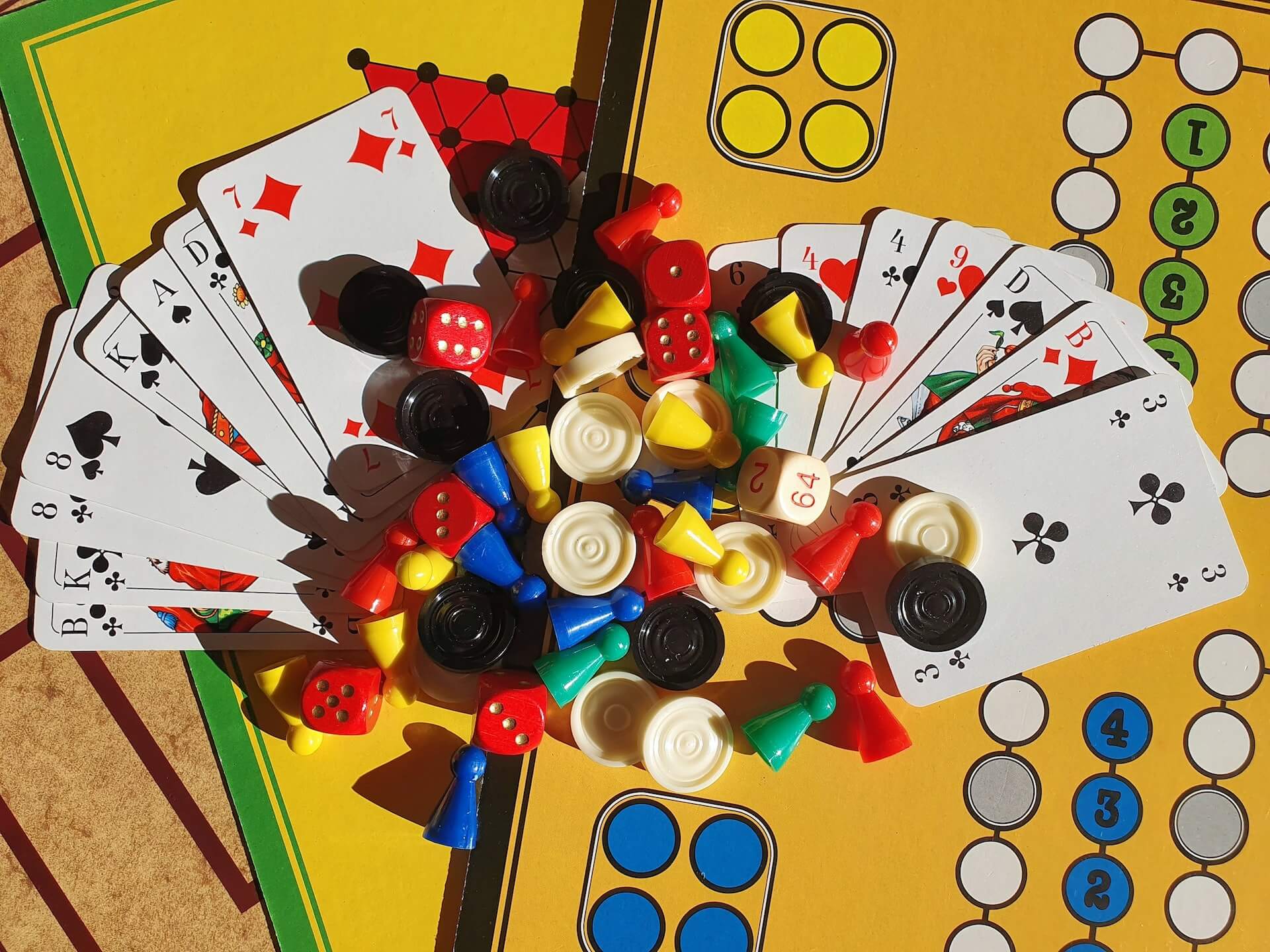
Why this works: OK, this one departs from the "classroom tech" theme in this post, but it's for a good reason! Lots of board games are based on answering questions from a set of cards. This mechanism fits so nicely for the classroom. Creating your own game isn't that hard -- students can pattern theirs off games they've played or make something brand new. Plus, the novelty factor and the creativity make this a win! Educator Jon Spike has provided lots of resources for creating your own games on his Gamestorm EDU site.
BONUS: Create a digital board game with the free Google Slides/PowerPoint templates at SlidesMania. These templates include game boards, cards that can be customized with your content, markers, dice, and more.

5. Write your opinion/justification
Why we use these worksheets: Recalling facts is pretty low on the critical thinking scale. Doing something with those facts -- like forming and justifying an opinion or a statement -- climbs up the critical thinking scale. Usually, though, worksheets that encourage this type of thinking are pretty lifeless -- a page with a prompt and a bunch of lines for students to write. This can also lead students to feel overwhelmed -- like looking at the blinking cursor of a blank document and thinking, "What do I say ... and where do I even start?"
An alternative: Record it with a video on Microsoft Flip
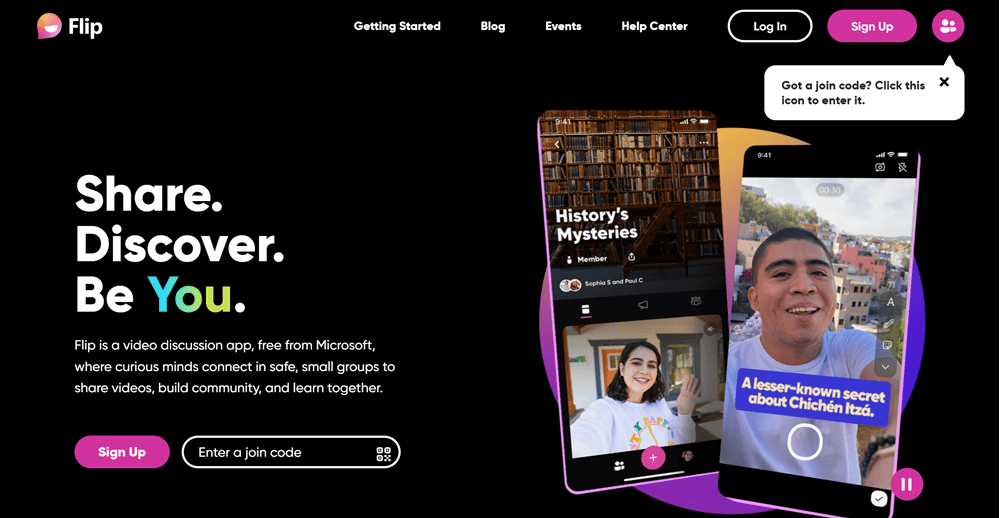
Why this works: Some students can explain their thinking in a simple conversation easier than writing it out. You also get their intonation and verbal cues to understand what they're really saying. When students record themselves on Microsoft Flip, they can add text and images -- even a split screen board that acts as slides for pertinent information. Plus, it's a place where students can practice their speaking skills.

6. Comprehension questions
Why we use these worksheets: When students read a story or learn about something, we want to know how much they've understood -- or comprehended -- the material. So we ask them questions in a worksheet that they should be able to answer if they understood what they read. If they can't answer the questions well, it's time to intervene.
An alternative: A Booksnaps interactive Google Slides template (make a copy)
Why this works: Booksnaps are a fun way to talk about what you've just read. Educator Tara Martin coined the term, describing how you take a picture of a page of a book, then mark it up with underlining, emojis, and other visuals to annotate and comment. Students can show what they comprehend from what they've read this way. Learn more about Booksnaps and other ways to make them here.

7. Math problems
Why we use these worksheets: Reps, reps, reps. Repetitions make permanent. (Of course, they don't make perfect ... perfect reps make perfect permanent. Reflecting on those mistakes is powerful, too, but that's a different blog post ...)
An alternative: Gamified reps with a Snakes and Ladders game from Genially (example)
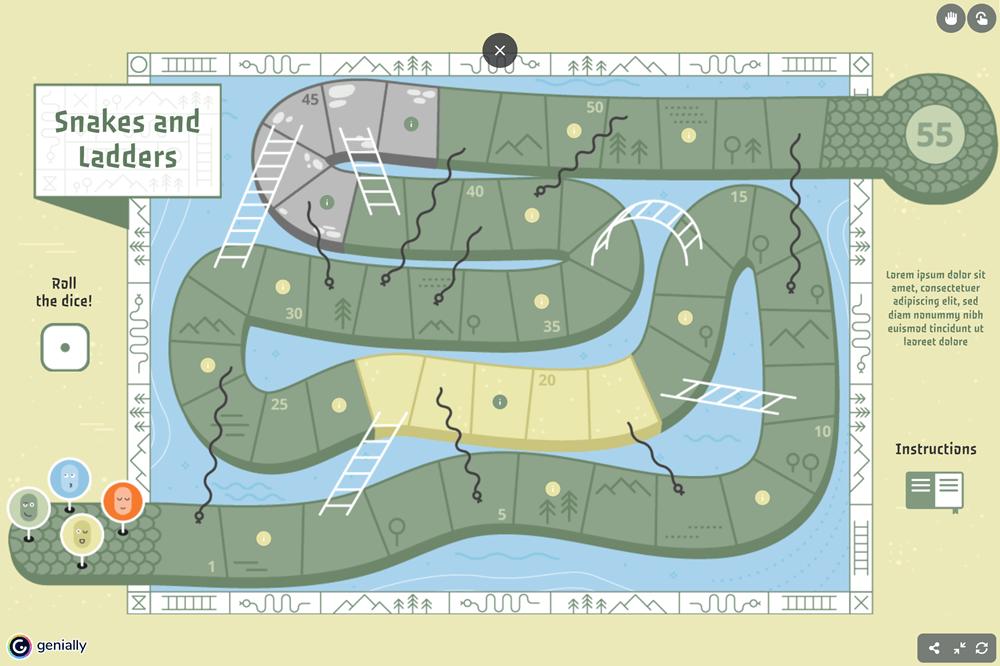
Why this works: Gamification can be a bit of external motivation. If winning the game becomes motivation for getting repetitions with new math skills, it can create conditions for successful practice with the content.
BONUS: Do a one-question deep dive with a video tool like Microsoft Flip or Screencastify. Instead of doing lots of practice problems, have students do a one-question deep dive. In it, they record themselves working through one problem -- just one! -- and explaining their steps and thought process. It helps us see patterns, problems, and things to adjust.

8. Label a system or complex item
Why we use these worksheets: It's important that students identify the different parts of a whole ... or the different steps in a process. When there's something big to learn that has lots of parts, this is the easiest way to practice showing what we know ... and for the teacher to see understanding.
An alternative: A Learning Apps interactive activity (skeletal system example)
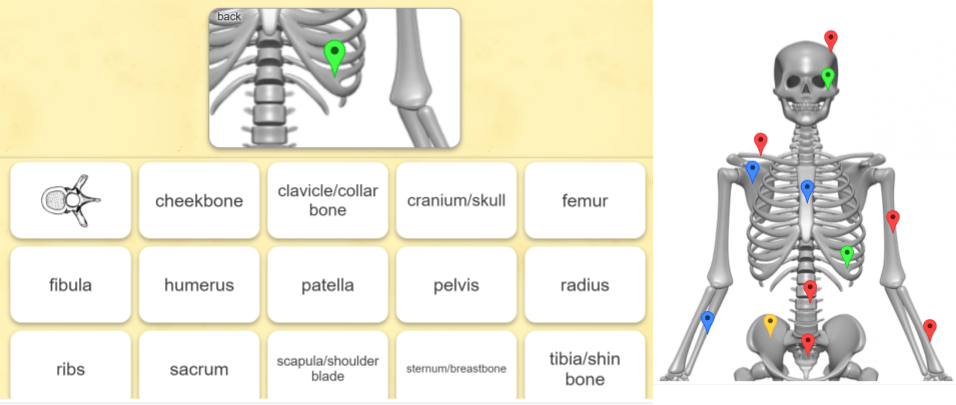
Why this works: These labeling and matching activities can be done quickly and easily when digital. Students can check their answers for immediate feedback. These are kind of like digital manipulatives, which are far less messy than cutting out papers or using expensive reusable (plastic) manipulatives. Here's an example of labeling the 50 U.S. states ... and here's another example with the digestive system. You can browse the types of apps available in Learning Apps and even search for pre-made apps.

9. Character profile
Why we use these worksheets: When we are studying a novel, a short story, a biography or historical figures, we want students to analyze those characters. They identify important details and things that are unique that set that character apart. When they understand that character, they can better analyze the context the character is in (history, story, etc.).
An alternative: A Character Card template (Genially template) (Google Slides template)
Why this works: This activity frames the character as a student might in a game like Pokémon. In lots of games, the characters have characteristics and ratings. This template lets the student analyze and describe a character much like one might in a trading card game.

10. Create a list
Why we use these worksheets: Lists are helpful tools that lots of us still use as adults. They help us make sure we aren't missing anything in a group. They also help us rank things in order according to a criteria. When we use them in learning, it helps students organize, prioritize and rank what they're learning to help it all make sense.
An alternative: A Wakelet collection (wakelet.com)

Why this works: Wakelet lets students create collections. It's kind of like Pinterest for the classroom. Create collections organized in columns, rows, grids, a scattered "mood board," and more. Students can add text, images, PDF files, social media posts, links, and more to their Wakelet collections. Plus, they're collaborative and easy to share!


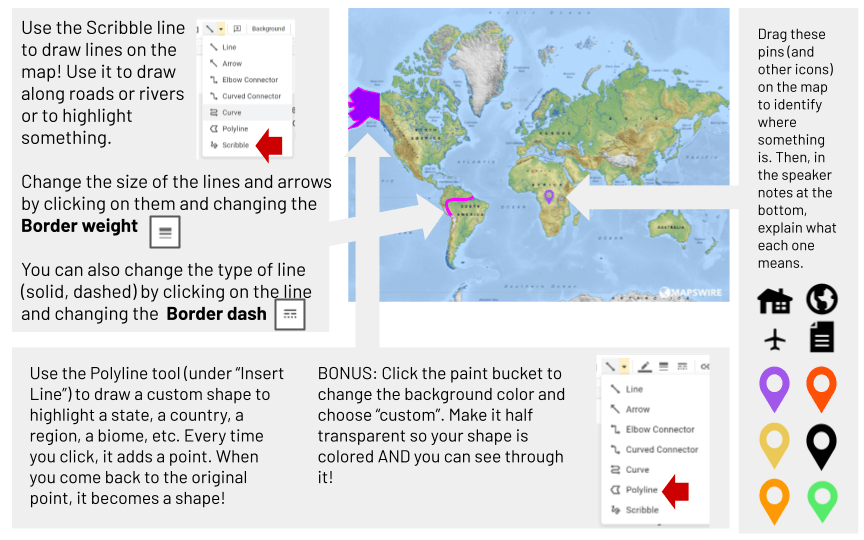
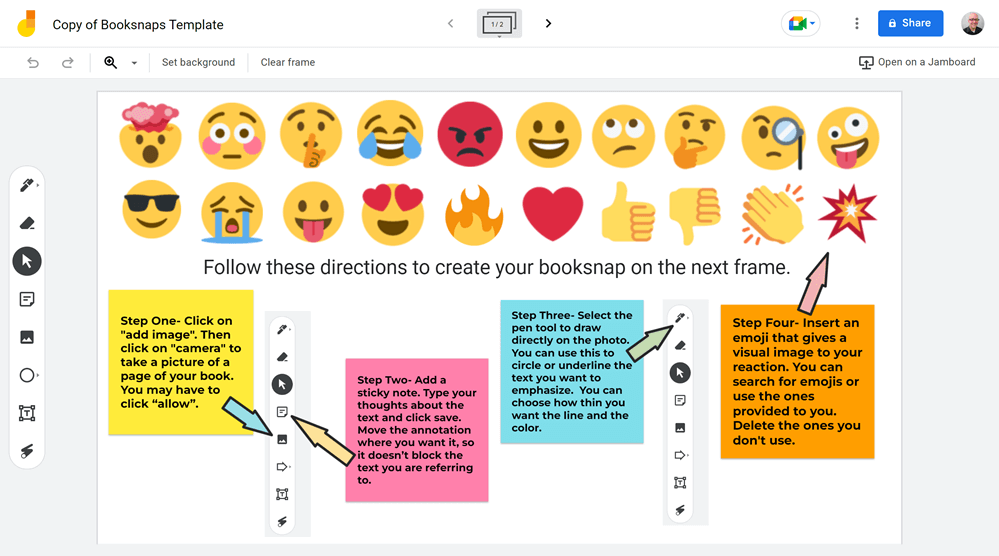
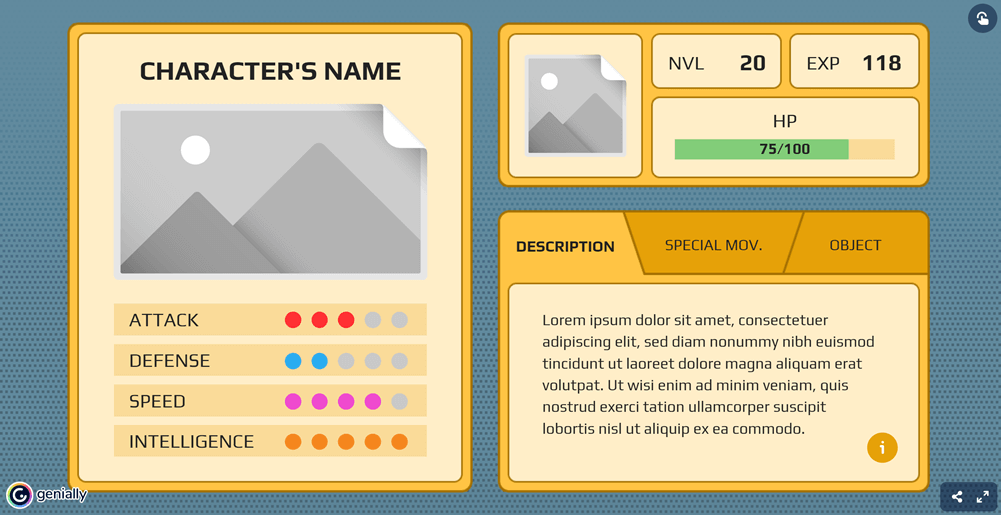

Thank you for providing useful tips and resources. I appreciate that you give me new things to try.
I really appreciate your blog! It’s extremely helpful for peoples I would love to visit your site again soon! if you want to make a professional resume Then You Definitely Check Resume Builderr
Sage info provided.
Reliable and superb post.
The link to the Character Trading Card in Genially does not appear to be editable and I can’t find that template on their website. Is there a “reusable” version and if so, can you please post that link! That is an awesome and I would like to use.